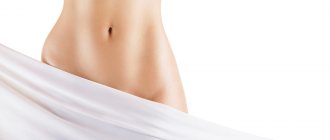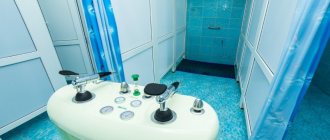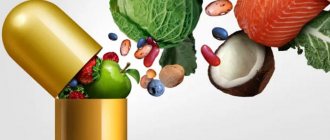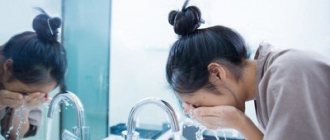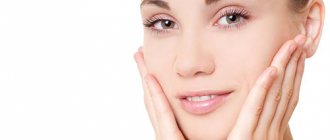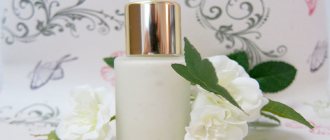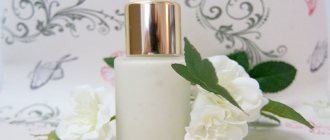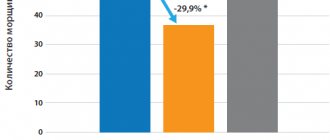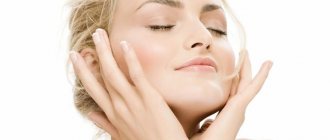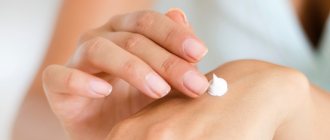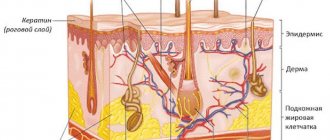Problem with hair growth and hair loss
Problems with hair growth and hair loss are on the agenda today. This problem is painful for many people.
- Compound
- Indications for use
- Methods of application
- Benefits of dry brewer's yeast
- Benefits of natural brewer's yeast
- Hair masks
- Contraindications for use
- Reviews
For quite a long time, brewer's yeast has been a wonderful and simple remedy for combating hair loss. They have only positive reviews, despite several contraindications for use. They are also used to accelerate hair growth.
Brewer's yeast: composition
Brewer's yeast tablets contain many vitamins.
In general, brewer's yeast is a plant unicellular organism. They belong to the class of mushrooms and contain many useful enzymes and some other components.
These organisms are able to accelerate the processes of fermentation and oxidation of carbohydrates (and other organic compounds). Substances that are present in almost complete composition in these mushrooms:
- Amino acids;
- Natural protein;
- Vitamins D, H, PP, E, B;
- Minerals (zinc, iron, manganese, selenium, calcium, phosphorus, magnesium).
It is precisely because of their extraordinary and useful composition that these supplements are often used in medical practice as a therapeutic and prophylactic agent. This medicine can increase performance, improve tone and general well-being, increase resistance to various diseases, and increase resistance to stress.
Today there are enough products in which brewer's yeast is the main active ingredient. But for additional components in such products they often use: succinic acid, magnesium, zinc. Depending on a person’s problem, it is customary to choose the right dietary supplement accordingly.
How to make your own beer shakes
You can easily prepare fresh brewer's yeast with your own hands from available products:
- Recipe No. 1: in a deep jug, mix water with flour (150 g each), after 7 hours, add 25 g of sugar and pour a glass of beer. The mixture should stand in a warm place for 10-12 hours, and then be stored as purchased live yeast.
- Recipe No. 2: pour 150 g of washed raisins into a bottle with a fairly wide neck, pour 250 ml of warm milk and water into it, and add 50 g of sugar. Cover the neck with gauze and leave for 5 days. Then seal the yeast bottle and store it in the refrigerator.
- Recipe No. 3: grate three medium potatoes on a fine grater, add 1.5 tsp to the pulp. salt and 2 tbsp. l. sugar and water, leave in a warm place for 6-9 hours until foam appears.
Advice! Homemade yeast is contraindicated for gout, allergies to its composition, and diarrhea.
Brewer's yeast: benefits
Brewer's yeast improves the functioning of the gastrointestinal tract.
Brewer's yeast is so beneficial for the body that its role is simply invaluable for the human body.
This is what these supplements are ready to give us: improving overall functioning, removing toxins, maintaining the normal functioning of the pancreas, and restoring the functioning of the gastrointestinal tract.
- They improve the functioning of the gastrointestinal tract, increase appetite, improve food absorption and digestion processes, normalize metabolic processes (protein, fat, carbohydrates), and maintain the acid-base balance of biofluids.
- Brewer's yeast is a means of replenishing vitamin B.
- Benefits for the cardiovascular system and nervous system: help in dealing with physical and emotional stress.
- For the skin: the condition of the skin improves, especially if the skin is problematic (oily with enlarged pores, acne, pimples).
- For hair: hair condition improves, roots become stronger, dandruff disappears. It is possible to use brewer's yeast as masks, but one drawback will be noted here. It's all about the smell that comes from the drug and it won't be so easy to wash it off.
- Benefits for the immune system: can strengthen the immune system, exhibit antioxidant properties in a high percentage, prevent early aging, preventive against liver cancer.
Frequent intake of brewer's yeast can be indicated for both weight gain and weight loss, and depending on the case, each dose may differ.
External use of yeast for hair - recipes
There are many options for making masks with yeast. Moreover, not only brewer’s yeast is used, but also baker’s yeast. Let's look at the most effective, in our opinion, yeast masks.
Yeast for hair thickness
Recipe No. 1: Yeast mask with red pepper
To prepare you will need:
- Brewer's yeast - 45 g.
- Water - 25 ml.
- Pepper tincture - 2.5 tbsp. l.
How to do:
- Stir fresh yeast in warm water.
- Add the tincture (can be replaced with ground red pepper), mix everything.
- Apply the mixture to your scalp and distribute the remainder evenly throughout your hair.
- Leave the mask on for about half an hour, then wash off.
Recipe No. 2: Hair mask with yeast and honey
You will need:
- Dry yeast - 12 g.
- Water - 50 ml.
- Honey - 45 g.
Preparation:
- Pour water over the yeast (the temperature should not be higher than 40⁰C), leave it for 30 minutes so that it “wake up”.
- Then add honey and leave the mixture for another 17-20 minutes to infuse.
- Treat your scalp and hair with a mask, wrap your head with a towel.
- The mask lasts for 6 hours and then is washed off.
Advice! To speed up the effect, add 1 tsp of hair yeast to your shampoo every time you wash your hair. yeast per 20 g of hair wash. You need to mix the shampoo with yeast in your palm and wash your hair.
Recipe No. 3: Hair balm made from yeast and lemon oil
Prepare:
- Liquid brewer's yeast - 250 ml.
- Water - 500 ml.
- Apple cider vinegar - 15 ml.
- Essential lemon oil - 2-3 drops.
How to make balm:
- Let all ingredients sit at room temperature for two hours.
- Then mix them, apply to washed hair, rinse with a decoction of herbs after 35 minutes.
- You can use this yeast balm after every hair wash.
Yeast for hair loss and split ends
Recipe No. 1: Yeast mask with olive oil and nettle
Compound:
- Live yeast - 75 ml.
- Olive oil - 125 ml.
- Honey - 6 tbsp. l.
- Nettle decoction - 300 ml.
Cooking process:
- Mix the ingredients in a glass container.
- Gradually distribute the mask through your hair.
- Cover your head with a plastic cap.
- Leave the mixture on your hair for at least 40 minutes.
- Rinse with warm water and suitable shampoo.
Interesting! Olive oil, yeast and honey for hair perfectly restore the hair structure after coloring or deep lightening of curls. Several procedures will not easily get rid of split ends, but will also create the effect of laminated hair.
Recipe No. 2: Mask with yeast and onions
For the mask you need:
- Onion - 1 medium piece.
- Brewer's yeast - 1.5 tbsp. l.
- Warm water - 30 ml.
- Castor oil - 10 ml.
- Burdock oil - 10 ml.
Preparation:
- Squeeze the juice from the onion.
- Dissolve yeast in water.
- Combine all products in a ceramic bowl.
- Completely treat the scalp.
- Cover your head with a cap and keep the mask on for 40-45 minutes.
- Then wash your hair with shampoo several times to completely remove the oils.
Yeast for hair against dandruff
Recipe No. 1: Mask with mustard and yeast for hair
Take:
- Baker's yeast - 20 g.
- Sugar - 18-20 g.
- Honey - 25 g.
- Dry mustard - 10 g.
Cooking rules:
- Sprinkle the yeast with sugar and wait until it begins to ferment.
- Then add honey, mustard powder, mix everything well.
- Apply onto your hair, leave on for 60 minutes, and rinse off the mask.
Recipe No. 2: Kefir-yeast mask-balm
What you will need:
- Liquid brewer's yeast - 30 ml.
- Kefir of any fat content - 200 ml.
- Tea tree oil - 1 drop.
How to cook:
- Dissolve the yeast in kefir, let it ferment a little (it will take 35 minutes).
- Then drop tea tree ether into the mask and gently stir the mixture so that the foam does not disappear.
- Spread the resulting mixture on your head and let your hair absorb the beneficial substances.
- Rinse your hair with warm water.
Advice! For dandruff, it is better to use only liquid yeast with kefir for hair. Compared to dry yeast, they kill fungi more actively, moisturize the skin and relieve flaking.
Recipe No. 3: Egg-yeast mask
Required:
- Brewer's yeast - 50 ml.
- Warm milk - 200 ml.
- Burdock oil - 70 ml
- Yolks - 2 pcs.
- Vitamin A and B1 - 1 ampoule each.
- Liquid tocopherol - 1/2 tsp.
Preparation:
- Stir the yeast with preheated milk (not hot!).
- Then add the oils, then the vitamins, and finally the mashed yolks.
- Keep the mask on your head for 2 hours, then rinse with warm water.
Enriched brewer's yeast
Brewer's yeast with additives is even more beneficial for the body.
Enriched brewer's yeast also contains some additional component. In the pharmacy you can find such supplements with selenium, zinc, magnesium, and succinic acid.
- If it contains succinic acid: it increases muscle elasticity (this is very useful for athletes and people with increased physical activity).
- If it contains magnesium, the benefit will be its participation in protein synthesis and in maintaining energy reserves.
- If it contains zinc, the supplement will solve problems that may occur as a result of zinc deficiency (high cholesterol, prostate diseases, decreased sexual activity, infertility, skin problems, problems with nails and hair). If you take brewer's yeast at the same time as iron, this will be the best treatment for anemia.
- If brewer's yeast contains selenium, then the drug can be used as a prophylactic against premature aging.
- If it contains calcium, the drug can be used to strengthen teeth, hair, and nails.
- If the composition contains potassium, then there will be benefits for the nervous system (recovery), increased muscle tone.
- Sulfur in the dietary supplement will bring elasticity to the skin and will be an excellent means of preventing aging.
The iodine in brewer's yeast will restore normal functioning of the thyroid gland.
Release form
The product is available in tablet form, as well as in the form of loose, easily crumbling granules with a diameter of 3 to 5 mm, powder or flat flakes of a yellowish (possibly with a grayish tint) color.
The product has a bitter taste and a characteristic odor. It goes on sale packaged in 25, 50 or 100 grams in jars or bags.
The tablets are biconvex, brownish in color, without a shell, with a characteristic yeasty odor. Packaged in 60 or 100 pieces in bottles made of polymer materials.
Brewer's yeast: indications for use
If you have diabetes, you can use brewer's yeast as a dietary supplement.
Among the indications for the use of brewer's yeast as a biological additive, it is worth noting the following diseases and conditions:
- Problematic and oily skin;
- Neuralgia;
- Prevention of cardiovascular diseases;
- Intense stress (mental, physical);
- Hair fragility, dry hair and nails;
- Metabolic disease;
- Radiation and exposure to chemicals;
- Anemia;
- Psoriasis, eczema;
- Dermatoses;
- Furunculosis;
- Gastrointestinal diseases;
- Obesity;
- Poor nutrition;
- The presence of cracks in the corners of the mouth;
- Prevention of hypovitaminosis-B;
- Recovery period for weight gain and replenishment of vitamin deficiencies;
- Diabetes.
Interaction
Brewer's yeast is a multicomponent product. When used simultaneously with other drugs, on the one hand, the activity of each of its constituent substances and the activity of the drug as a whole may change, on the other hand, the pharmacological profile of drugs that are used in combination with Brewer's yeast may change.
Taking alcohol, diuretics , and oral contraceptives can reduce vitamin B1 .
Since the transformation of vitamin B1 into its active form occurs with the participation of magnesium, it is advisable to take dietary supplements with magnesium-containing preparations.
The drug is contraindicated for people taking Levodopa , since vitamin B6 reduces the effectiveness of this drug. In addition, vitamin B6 is capable of:
- interfere with the absorption and reduce the plasma concentration of anticonvulsants such as phenobarbital and phenytoin ;
- increase intracellular levels of zinc and magnesium.
When used simultaneously with Theophylline , Penicillin , Isoniazid , Cycloserine and oral contraceptives, the dose of Brewer's yeast must be increased.
Antifungal drugs reduce the effectiveness of brewer's yeast.
Brewer's yeast: the right method
Brewer's yeast is often taken in special courses of one to two months. During the year, no more than 3 appointments are prescribed with mandatory observance of intermediate periods (from 2 to 3 months).
Children over 12 years of age and adults are prescribed this food supplement, one tablet 3 times a day. Be sure to take one hour after meals. Large dosages should always be agreed with your doctor. If the dose is prescribed to a child under 12 years old: children 3-7 years old are prescribed 0.25 grams once a day, from 7 years old - 0.5 grams twice a day.
Strategy and tactics for treating diffuse hair thinning
Despite many years of research into hair loss, the pathogenesis of this common disease is still not completely clear. However, it is important for practitioners to make certain decisions in choosing a method and tactics of therapy, as well as to be able to evaluate and apply newly developed techniques. Issues of drug treatment of hair loss are being actively studied today. With all the variety of modern means, in order to avoid polypharmacy and to achieve the best clinical, aesthetic and psychological results, it is necessary to choose the correct treatment algorithm, taking into account the etiopathogenesis. The treatment strategy for diffuse hair loss is a specific plan covering a long period of time and is determined by the following tactics:
I. Pathogenetic treatment. II. Taking vitamins. III. Use of biologically active additives. IV. Improving microcirculation of the scalp. V. Stimulation of hair growth.
I. Pathogenetic treatment. The etiology and pathogenesis of diffuse hair loss is not fully understood. However, today it can be noted that with diffuse hair loss, in contrast to severe forms of alopecia - focal or scarring, there are no organic changes in the hair follicle, but only the rhythm of hair change is disrupted. Consequently, complete baldness does not occur and with proper treatment it is always possible to restore hair density. Androgenetic alopecia is often classified as diffuse baldness. Androgenetic alopecia (AA) is fundamentally different from diffuse alopecia (DA). First, this hair loss has typical hair thinning or balding in the frontal and/or parietal areas. Secondly, in AA, the main links in the pathogenesis are the excess content of androgens in the body tissues or the increased sensitivity of specific receptors to them, as well as a local disorder of androgen metabolism caused by genetic predisposition [1–3]. Therefore, in the absence of signs of androgenetic hair loss, the doctor needs to direct treatment to restore the rhythm of hair change. In this situation, homeopathic medicines can be an alternative treatment. Recent studies indicate the effectiveness of homeopathic medicines in the treatment of various types of alopecia. By complementing traditional treatment, homeopathic medicines expand the possibilities for optimizing treatment. What they have in common is a regulatory and stimulating effect due to the inclusion of autogenic mechanisms in therapeutic processes. The drug of choice is the complex homeopathic drug Selencin®, prescribed 1 tablet 3 times a day 30 minutes before meals or 1 hour after meals for 2–4 months. Practical experience in using this drug has proven its high effectiveness, which is reflected in scientific works [4–6].
AA therapy is aimed at the main links of pathogenesis: regulation of the level of androgens in body tissues, reduction of the increased sensitivity of specific receptors to them, as well as regulation of local disorders of androgen metabolism [1–3].
Contrary to the popular opinion about the need to prescribe oral antiandrogens for AA, in our opinion, treatment should begin with topical drugs with an antiandrogenic effect, especially in women. In women, unlike men, AA progresses more favorably. In the parietal region in females, there is a miniaturization of the hair follicle, a predominance of vellus hair over shaft hair, which is clinically manifested by widening of the parting. In men, complete atrophy of the hair follicles gradually occurs, leading to final and irreversible hair loss. Consequently, in women, unlike men, AA is easier to treat and hair restoration is always possible.
Specialized products for the treatment of AA and DA are the “Selencin®” series, consisting of a complex of external preparations (spray, shampoo, balm and hair mask). The Selentsin® cosmetic program for hair loss is a combination of innovative patented French components and traditional remedies for the treatment of alopecia. The undoubted advantage of this program is its two-stage therapy, which provides a systematic approach to solving the problem of hair loss. Stage 1 - suppression of 5-alpha reductase activity and activation of vascular endothelial growth factor (VEGF, Vascular endothelial growth factor). Stage 2 - stimulation of hair growth by enhancing microcirculation of the hair follicle.
The products of the Selentsin® cosmetic line were developed jointly with leading French companies developing and producing ingredients for the cosmetic industry - Naturex SA and Silab. The complex includes patented components - the latest developments from leading French manufacturers: Anageline® and Seveov®. Anageline® (Silab, France) is an ingredient obtained from sweet white lupine. Anageline® 0.25% solution has the ability to inhibit 5-alpha reductase activity by 18% (in vitro) and stimulate VEGF by 17% (in vitro). A 0.5% Anageline® solution has been proven to increase the metabolic activity of cells by 21% (in vitro), thereby reducing hair loss, promoting hair growth and increasing hair density. Scientific studies have shown that, thanks to the patented Anageline® component, hair loss is reduced by 17% in 3 months [7]. Selentsin® cosmetics contain the maximum recommended amount of the active component Anageline® - up to 9%.
Seveov® is an active ingredient produced by Naturex (France), obtained from the tubers of the Peruvian maca plant. Maca is grown in highland plantations in Peru. This component is new in the field of hair care. Seveov® actively influences the angiogenesis of blood vessels adjacent to the hair follicle, which helps to lengthen the anagen phase. Seveov® stimulates hair growth by 93% (in vitro).
The preparations also contain other active ingredients: caffeine, burdock extract, nettle extract, collagen hydrolyzate, biotin, menthol. Caffeine is a natural hair growth stimulant, a powerful antioxidant, and neutralizes the effects of testosterone. The high effectiveness of these ingredients is explained by the fact that they can penetrate the epidermal barrier, reaching the hair papilla.
In the production of the Selentsin® cosmetic line, high-quality raw materials from leading suppliers and companies developing cosmetic raw materials are used. Including CO2 extracts (nettle, burdock, mint, etc.) - extremely rich ingredients from plant raw materials, obtained by supercritical extraction with carbon dioxide, which are an order of magnitude more active than other types of extracts, do not contain solvents and various impurities.
After finishing using the products from the Selentsin® cosmetic line, there is no withdrawal effect.
Systemic drugs with antiandrogenic action, despite pronounced side effects (decreased potency and/or libido, impaired ejaculation, decreased ejaculate volume, enlarged and painful mammary glands, increased blood levels of luteinizing and follicle-stimulating hormone, decreased concentration of prostate-specific antigen (PSA), etc.) d.), are widely used for the treatment of AA in men.
Finasteride (Propecia®) is the most popular drug in the treatment of AA. It is a type II 5-alpha reductase inhibitor that reduces the conversion of testosterone to dehydrotestosterone. It is effective for a duration of use of 6 to 12 months at a dose of 1 mg/day [8, 9].
Clinical observations showed that after 5 years of taking the drug, only 0.3% of patients reported a weakened sexual desire and erectile dysfunction. Since finasteride reduces PSA levels by 30–50%, men over 40 years of age are recommended to double the results when indicating PSA levels (this is indicated in the instructions for the drug) [8].
This drug is not officially approved for use in the treatment of women with alopecia, because it has a teratogenic effect on male embryos. However, some authors recommend prescribing finasteride to women in combination with an oral contraceptive [9]. This drug is most effective for incipient hair loss, so treatment should be started at the first signs of hair thinning. It is important to emphasize that the absence of a change in hair density during treatment is not a failure of therapy, but, on the contrary, indicates its success, since continued hair loss should lead to significant thinning over time [8].
Dutasteride (Avodart®), which inhibits type I and II 5-alpha reductase, has not yet received full FDA approval for the treatment of AA and is under clinical investigation. . Currently used only in the treatment of prostate hyperplasia. According to modern studies, the effectiveness of dutasteride at a dose of 2.5 mg/day was superior to the effectiveness of finasteride at a dose of 5 mg/day [9].
Estrogens are indirect antiandrogens and are sometimes used to treat AA in women in the form of contraceptive medications. On the other hand, estrogens act not only as antiandrogens, but also as natural stimulators of hair growth, since estrogen-stimulated hair follicles are located in the parietal region [9]. It is known that after 30–35 years, a gradual decrease in the content of some sex hormones in women begins. During peri- and postmenopause, ovarian function declines and the production of estrogens by the follicular apparatus almost completely stops, but the secretion of their androgenic precursors continues in the ovarian stroma. Thus, the total amount of estrogen hormones in women after 40–45 years of age decreases by approximately 13 times compared to the normal average values. This leads to estrogen deficiency syndrome, but, unlike hypoestrogenism, the formation of testosterone and androstenediol in the ovaries continues for a longer time [3]. An important condition for the effectiveness of conservative measures in the correction of age-related AA during menopause is the prescription of hormone replacement therapy (HRT), based on modern ideas about the etiopathogenetic essence of the menopause. In domestic dermatology, this direction is taking its first steps, however, studies of HRT in the practice of dermatovenerologists have shown encouraging results [3]. It should be taken into account that, despite the widespread use of HRT in gynecological and gerontological practice, there is a fairly wide range of contraindications that prevent the administration of this type of treatment to women with concomitant pathology associated with the development of menopausal syndrome [3].
II. Vitamins are a group of organic substances combined by chemical nature, united on the basis of their absolute necessity for the body as an integral part of food. Of course, vitamins are not a supplier of energy for the body and do not have a significant plastic value, but they play a vital role in metabolism, participate in many biochemical reactions, performing a catalytic function as part of various enzymes or acting as regulatory intermediaries, performing signaling functions of exogenous prohormones and hormones . An increasing deficiency of vitamins, disrupting metabolism, aggravates the course of any disease and prevents their successful treatment. The dividing cells of the hair follicle are especially sensitive to vitamin deficiency. What are the tactics in choosing vitamins for diffuse hair loss? Of course, preference should be given to natural vitamins obtained by extracting from plants, rather than chemically synthesized in production. Natural vitamins contain a whole complex of substances that have similar vitamin activity, and not just one substance, for example, natural vitamin E may include all tocopherols existing in nature, and not just one tocopherol. Synthetic vitamin C is only ascorbic acid and nothing else. Natural vitamin C, extracted from rose hips, contains a whole complex of vitamins C, as well as bioflavonoids (vitamin P). Natural vitamins are better absorbed and excreted more slowly than synthetic ones. For hair loss, various vitamins C, PP, A, B6, B1, B12 are recommended; multivitamin complexes and biologically active supplements are widely used, the composition of which is specially selected for hair treatment (Inneov, Alerana, Doppelgerz, etc.) .
III. Biologically active additives (BAA). The human diet today must contain more than 600 different substances (nutrients). Insufficient intake of micronutrients from food is a common problem in all civilized countries. It arose as an inevitable consequence of a decrease in energy expenditure and a corresponding decrease in the total amount of food consumed by modern man. In order for the hair shaft to grow strong, elastic and long, building materials are needed for it. What provides elasticity and strength to hair? The hair shaft consists of proteins, lipids, pigment, water and, of course, microelements, the most important of which are sulfur, calcium and magnesium. An essential component of keratin is the protein cystine (cysteine disulfide). It is cystine, due to disulfide bonds, that tightly strengthens keratin molecules together. Therefore, the largest amount of sulfur is contained in the keratin of hair and nails. Therefore, sufficient sulfur intake by the body is necessary for hair strength and elasticity. The risk group for the formation of sulfur deficiency is people who eat insufficiently and monotonously, with an increase in consumption of phosphates - lemonade, canned food, sausages, etc. [10].
Another strategically necessary component in the treatment of alopecia is yeast (“Dry brewer’s yeast, purified with sulfur “Evisent”, “Merz Yeast”). Yeast is one of the most effective complex natural vitamin preparations. They have been used in medicine for several decades to maintain natural metabolism, strengthen the immune system, increase performance, and improve well-being.
The therapeutic value of brewer's yeast is determined by the presence of large amounts of vitamin D (in the past, before the production of a synthetic analogue, brewer's yeast was used as a raw material for the production of vitamin D); content of B vitamins; zinc, calcium, amino acids; presence of orotic acid. An important point is that vitamins, micro- and macroelements of yeast are found in protein complexes, which determines the gradual nature of their entry into the human body. Thus, yeast improves the absorption of food, activates the transport functions of the intestine, normalizes metabolic processes, and has an immunostimulating and detoxifying effect.
In the treatment of alopecia, “Dry brewer's yeast purified with Evisent sulfur” (sulfur, vitamins B1, B6, PP, B2) is used, in the production of which a unique technology is used: incubation (growing) of yeast cultures occurs in special sulfur-enriched media, which ensures absorption and preservation of micronutrients by the yeast cell and, consequently, increased content and high bioavailability of the micronutrient (sulfur) in the preparation. All this makes it possible for the body to maximally absorb the micronutrients contained in the dietary supplement. Low-temperature drying technology at the final stage of production preserves the increased content of B vitamins in the yeast.
IV. Improving microcirculation of the scalp can be achieved by:
1) medicines; 2) irritant therapy; 3) physiotherapy.
Dermatology has extensive experience in the use of vascular drugs in the treatment of hair loss (xanthine nicotinate 1 tablet 2-3 times a day for 2 months, pentoxifylline (Trental) 1 tablet 3 times a day immediately after meals for 3 weeks; dipyridamole (Curantil) 1 tablet 3 times a day an hour before meals, for 1–3 months; Troxevasin 1 capsule 2–3 times a day for 1–3 months).
Currently, external products containing a 2–5% alcohol solution of minoxidil (Regaine, Alopexy, Pregain, Azelomax, Azelofelin, Alerana, etc.) have become very popular. Minoxidil, a potassium channel activator and vasodilator, was originally registered as an antihypertensive agent with a significant side effect of hypertrichosis. In 1988, the FDA approved a topical 2% solution for the treatment of hair loss and in 1997 allowed a 5% solution to be sold over the counter. Men are recommended to use a 5% minoxidil solution 2 times a day, women should use a 2% solution also 2 times a day. Short-term hair loss may occur 4–8 weeks after starting treatment. The patient must be warned that the use of the drug should not be stopped. The recommended course of treatment is 24 weeks [8]. Having extensive experience in using this drug, we can confidently speak about its high therapeutic effectiveness. However, along with the therapeutic effect, side effects were also revealed: allergic and contact dermatitis, hypertrichosis on the face, the need for long-term treatment, and the lack of a prolonged effect [8]. Recently, a structural analogue of minoxidil, aminexil, has been widely used, which is part of various cosmetics (lotions, shampoos), but still has the same side effects.
An ancient method that improves microcirculation of the scalp is still successfully used in dermatology in the form of irritant therapy. Preparations that can have a local irritating effect are well known to practicing doctors: tincture of capsicum, Capsitrin, pepper-camphor liniment, bodyagi pulp, 2% alcohol solution of essential mustard oil, etc.
Physiotherapeutic methods used in the treatment of diffuse hair loss are: local darsonvalization (silent discharge), ozokerite therapy, head massage, ultratonotherapy, warm compress. These methods cause a long-lasting vasodilator effect.
V. Stimulation of hair growth. According to most authors, hair growth can be enhanced with the help of herbal medicine (burdock oil, chamomile decoction, strings, etc.). Still, practice shows that these means are ineffective. To obtain the desired result, it is necessary to prescribe modern drugs containing active ingredients, which include Seveov®, caffeine, biotin (Selencin®), which can actually prolong the hair growth phase.
The drugs of choice may be the prostaglandin analogues latanoprost and bimatoprost, which are used in the treatment of ocular hypertension and glaucoma, but there is a side effect in the form of increased eyelash growth. Cosmetologists drew attention to this feature and conducted several small-scale studies. Bimatoprost (Latisse®) is currently used to stimulate eyelash growth. Foreign literature mentions extensive studies of latanoprost (Xalatan®) in stimulating scalp hair growth [9].
In conclusion, it should be noted that in the world there are about 300 thousand methods of treating baldness. With such a variety of drugs and methods, patients and doctors are often prone to polypharmacy, which makes it difficult to assess the effectiveness of therapy, increases the risk of side effects, reduces patient adherence to treatment and increases the cost of therapy. We must also remember that the number of hair follicles on the head cannot be increased by any medicine, so in the pursuit of beauty one should not forget the main commandment “do no harm.”
Literature
- Grishchenko Yu. V. Optimization of diagnosis and pathogenetic therapy of androgenetic alopecia in women. Author's abstract. for the job application Ph.D. honey. Sci. M., 2011. 30 p.
- Mareeva A. N. Features of clinical manifestations of androgenetic alopecia in women of reproductive age // Bulletin of Dermatology and Venereology. 2011, no. 1. pp. 103–107.
- Morgulis Yu. A. Hormone replacement therapy in the treatment of seborrheic dermatitis, rosacea and premature hair loss in menopausal women. Author's abstract. for the job application Ph.D. honey. Sci. M., 2010. 24 p.
- Batkaev E. A., Gallyamova Yu. A. Complex homeopathic drug “Selencin” in the treatment of Telogen effluvium // Bulletin of postgraduate medical education. M., 2002, No. 3. P. 42–43.
- Batkaev E. A., Gallyamova Yu. A., Kantimirova Yu. A. Homeopathic medicines in the practice of a dermatologist. Textbook, 2006. 30 p.
- Hassan Khaled. Optimization of therapy for diffuse alopecia, taking into account disturbances in microcirculation and microelement metabolism. Author's abstract. diss... cand. honey. Sci. M., 2011.
- Tenseurs naturels: innovations, expertise et savoir-faire natural tensors: innovation, expertise and know-how expression cosmetique: guide des ingredients cosmetiques // Guide of cosmetic ingredients in November, 2011.
- Hair transplantation. Ed. Robert S. Haber and D. B. Stough. M.: Red Esliver LLC, 2009. 219 p.
- Kevin J., McElwee Ph. D., Jerry Shapiro. Promising Therapies for Treating and/or Preventing Androgenic Alopecia // Skin Therapy Letter. 2012; 17 (6).
- Rebrov V. G., Gromova V. A. Vitamins and microelements. M.: “ALEV-V”, 2003. P. 670.
Yu. A. Gallyamova, Doctor of Medical Sciences, Professor
GBOU DPO RMAPO Ministry of Health and Social Development of Russia, Moscow
Contact information about the author for correspondence
Analogs
Level 4 ATX code matches:
Verona
Phibs
Gastrikumel
Fitogastrol
Thyroidea Compositum
Berlition
Thiolepta
Gastric collection
Espa-Lipon
Lipoic acid
Rosehip syrup
Octolipen
Thioctacid
Thiogamma
Figurin
Synonyms: Brewer's yeast Nagipol , Nagipol 2. For acne , Nagipol 1 , Brewer's yeast Evisent , Brewer's yeast ECO-MON , AMT brewer's yeast , Brewer's yeast Ecco Plus .
Analogues: Angiovit , Beviplex , Multi-Tabs-V-complex , Neuromultivit , Medivitan .
General rules for preparing yeast masks
All types of yeast are used to prepare masks: raw, granulated, dry, in the form of capsules (beer). Raw yeast is the most useful because it has a higher concentration of nutrients. To maintain exact proportions, you need to take into account that 1 tsp. dry yeast is equal to 10 g of raw product.
The yeast must be fresh, “live”. To check their freshness, a pinch of yeast is mixed with water, kefir and placed in a warm place for 10-15 minutes. If foam appears on the surface of the liquid, it means that the main component of the mask is fresh.
To prepare the mask, take a container whose volume is several times larger than the original volume of the prepared product, since the yeast retains the ability to increase the volume of liquid.
To increase the therapeutic effect, water in mask recipes is replaced with a decoction of medicinal herbs. Chamomile decoction is perfect for blondes and fair-haired girls, and nettle decoction is perfect for brunettes and brown-haired girls.
The general rule for all masks is that first the yeast, diluted with liquid, should stand for 40-60 minutes, “come up”, and then the remaining components of the mask are added to this mass. If you are making a mask with such ingredients for the first time, you should do an allergy test - apply 2-3 drops of the solution to the elbow bend and monitor the skin reaction for an hour. If there is no redness or swelling, the mask can be safely applied to the hair.
How to apply a yeast mask correctly?
For the best effect, your hair should be clean and freshly washed. It’s even better if they are slightly damp, not completely dried.
The procedure for applying and washing off the medicinal product:
- Wash your hair, dry your hair, apply a mask and massage each area of the scalp with your fingers.
- Use a wide-toothed comb to distribute the entire mixture through your hair, trying to do it evenly. It is advisable to avoid wetting the ends of the hair to avoid drying it out.
- To create a thermal effect and complete fermentation of the mask components, cover your hair with plastic wrap and additionally cover with a towel.
- Leave the mask on your head for no longer than 20-40 minutes so that it does not turn into a dried crust.
- Rinse off the mixture applied to your hair with plain water and shampoo. You can acidify the rinsing water with lemon juice (4 tablespoons per 1 liter of water).
Masks are used in courses of at least 2 months, the frequency of procedures is weekly.
